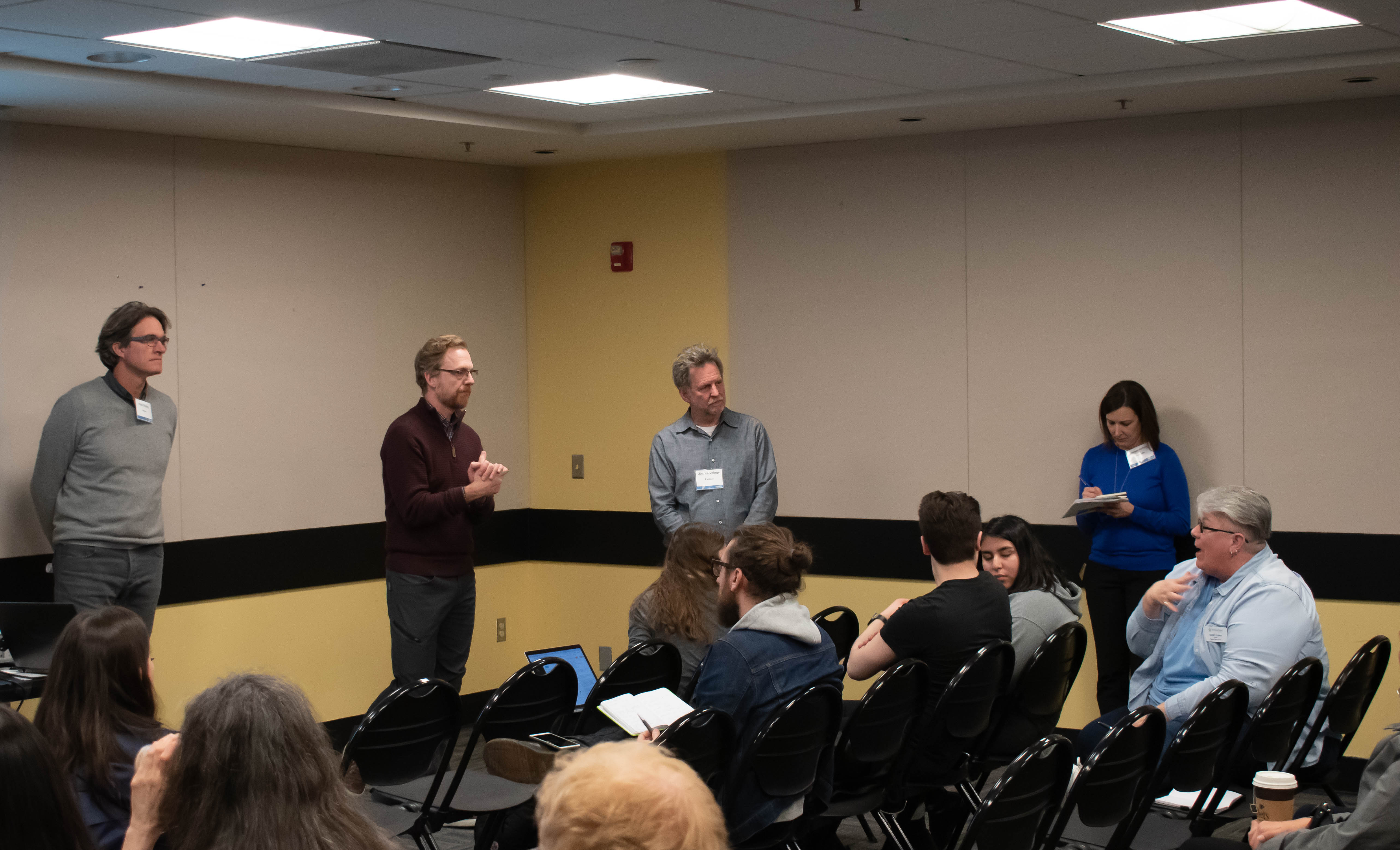Portland State’s Smith Memorial Student Union could undergo a multimillion dollar facelift within the next two years—as long as students are willing to foot the bill.
Architecture and design firm Opsis Architecture held an info session on March 4 to discuss a study that will ultimately bring a design proposal forward to students and ask whether they are willing to undertake significant student fee increases to modernize SMSU’s aging infrastructure.
The price tag for this modernization could run as high as $90/term for all students over the next 20–30 years.
Many issues have been identified with SMSU over the years, including a lack of natural light, limited space availability and scheduling constraints, along with wayfinding issues and accessibility challenges.
“I have 1,200 students and I can only get 49 in our space,” said Casey Curry, the new director of the Veteran’s Resource Center.
This will be the third study in 10 years on potential renovations to SMSU. In 2013, the Associated Students of Portland State University Student Fee Committee set aside $150,000 to produce the Smith 2020 Report, which looked at student needs, renovation costs and a set of conceptual designs for a range of different projects.
During ASPSU’s 2016 elections, a referendum to renovate SMSU based on that report failed to pass.
Students currently have very little say in how space is allocated in SMSU, but if student financing of the renovations were to move forward, all space housing non-student-centered organizations would open up and the administration of the building would shift to a student-controlled model.
What “student-controlled” ultimately looks like has yet to be determined, said Jason Franklin, director of campus planning and design at PSU. Why SMSU is not already student-controlled was not addressed during the info session.
On March 13, a steering committee consisting of campus planning staff, a student government representative and Opsis employees will decide on a single renovation plan that will be included in a survey scheduled to go out in May.
The cheapest option is estimated to cost $37–38 million and would update aging systems, complete deferred maintenance and include accessibility upgrades.
The most ambitious project is estimated to cost $110–120 million and would see a total renovation of SMSU, including a removal of the mezzanine level and an addition of two floors in the NE quadrant.
In all cases, any innovations and new construction would be financed through an increase to student fees. During construction, which is estimated to take 18–20 months, SMSU would remain partially occupied.
“I’m not saying if we did renovate it that [SMSU] would be a pleasant place to be,” Franklin said, “but it is less expensive to do it that way.”
If students get on board with the proposed plan, PSU President Rahmat Shoureshi and the Board of Trustees would still have to sign off on any proposed fee increases. Depending on what financing is available, student fees might not increase until the building renovations are finished.
When asked if any research had been done on impacts to students facing financial hardships or transfer students who might not be around to see the completed renovations, ASPSU University Affairs Director Emily Korte said those issues were concerns but no “extensive research” had been done.
A Smith Modernization Open House is scheduled from Noon–3 p.m. on April 3 in SMSU 101.






